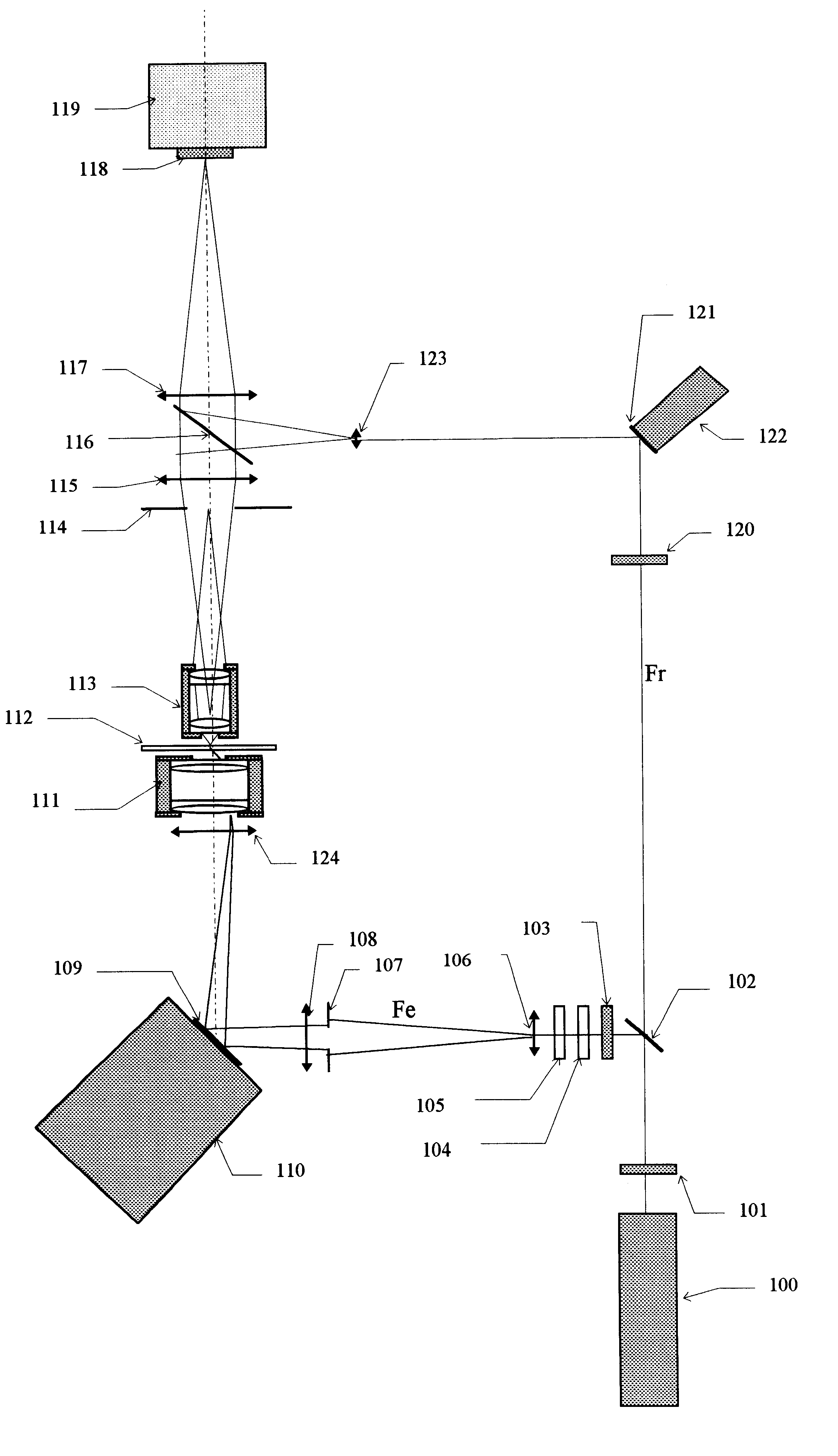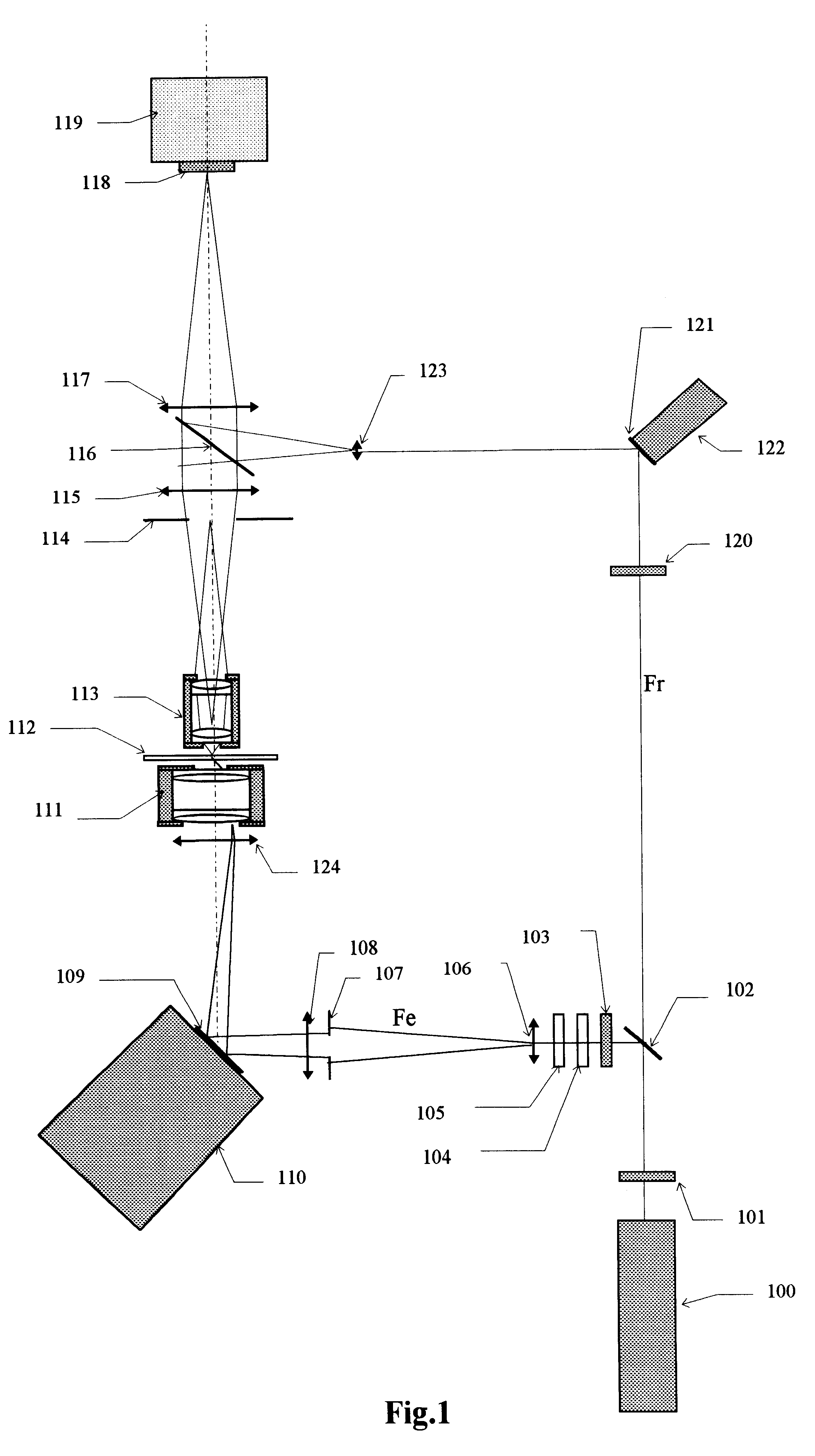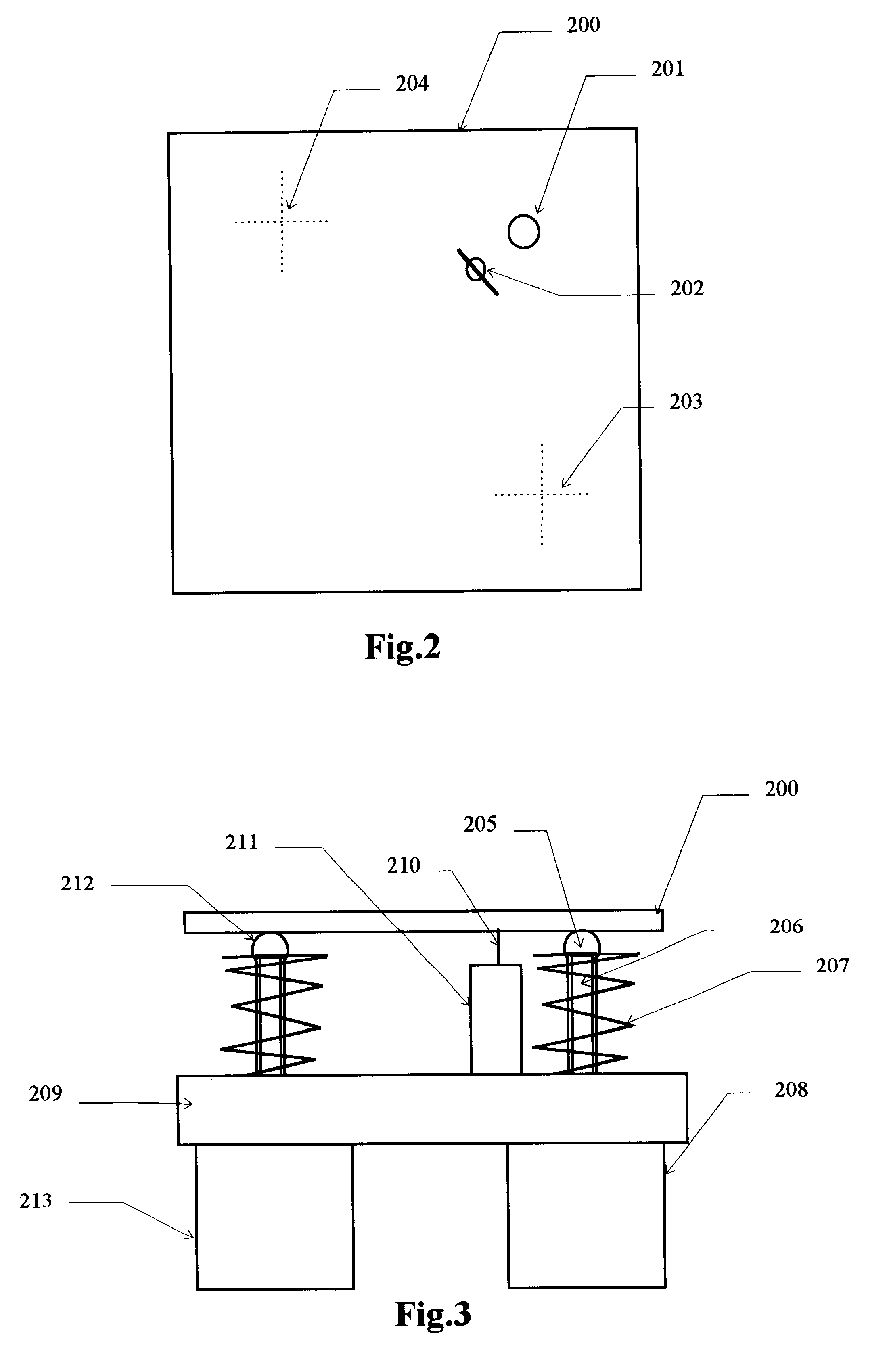Microscope generating a three-dimensional representation of an object and images generated by such a microscope
a three-dimensional representation and microscope technology, applied in the field of microscope generating a three-dimensional representation of observed objects, can solve the problems of inconvenient use of microscopes, inability to obtain images, and inability to use microscopes with extremely small index variations,
- Summary
- Abstract
- Description
- Claims
- Application Information
AI Technical Summary
Benefits of technology
Problems solved by technology
Method used
Image
Examples
second embodiment
6. DESCRIPTION OF A SECOND EMBODIMENT
This embodiment is a simple variant of the first and is represented in FIG. 25.
6.1. Principle
In the first embodiment, the sensor (118) is in the back (image) focal plane of the optical assembly made up of the objective (113) and lenses (115) and (117). The plane illuminating wave thus has a point image in this plane, and a spherical reference wave centered virtually on the object must be used to obtain homogeneous illumination on the sensor (118). In this second embodiment, the sensor (2018) is placed directly in the image plane of the objective. A plane illuminating wave consequently no longer has a point image. The reference wave must be the image through the objective of a virtual plane wave passing through the object.
first embodiment
An image in complex numbers is obtained on the CCD (2018) from three images differing in the phase of the reference wave, using, as in the first embodiment, the formula ##EQU62##
The two-dimensional Fourier transform of this image gives an image in complex numbers equivalent to that which, in the first embodiment, was obtained directly in the plane of the CCD sensor. This image thus replaces the image obtained directly on the sensor in the first embodiment. For the rest, this embodiment uses the same principles as the first.
6.2. Equipment description
The system is represented in FIG. 25. The elements of this figure, identical to those of FIG. 1, are numbered by replacing the first digit 1 of the elements of FIG. 1 by the digit 20. For example (116) becomes (2016). This system is similar to the one used in the first embodiment, except that:
The device for controlled attenuation of the beam, made up of the elements (104) and (105) is eliminated.
The CCD (2018) is placed in the plane in wh...
third embodiment
7. DESCRIPTION OF A THIRD EMBODIMENT
This embodiment is more complex and more costly than the preceding but allows higher performance in terms of definition and speed.
7.1. Principle
This acquisition method makes it possible to improve the performances of the first embodiment as follows:
Higher image acquisition speed:
In the first embodiment, this speed is limited by the mechanical movement of the stepping motors and the need to wait for the absorption of vibrations induced after each movement. The present embodiment allows the acceleration of this image acquisition by replacing this mechanical system by an optical beam deflection system based on liquid crystals and not inducing any mechanical displacements in the system.
Improved precision:
In the first embodiment, the precision is limited by the impossibility of adopting all the possible directions for the illuminating beam and by the fact that the reflected wave is not taken into account. The present embodiment uses a two-objective sys...
PUM
 Login to View More
Login to View More Abstract
Description
Claims
Application Information
 Login to View More
Login to View More - R&D
- Intellectual Property
- Life Sciences
- Materials
- Tech Scout
- Unparalleled Data Quality
- Higher Quality Content
- 60% Fewer Hallucinations
Browse by: Latest US Patents, China's latest patents, Technical Efficacy Thesaurus, Application Domain, Technology Topic, Popular Technical Reports.
© 2025 PatSnap. All rights reserved.Legal|Privacy policy|Modern Slavery Act Transparency Statement|Sitemap|About US| Contact US: help@patsnap.com



